![]() The AMERICA's CUP
The AMERICA's CUP![]()
| On 22 August 1851, at Cowes, for the Universal exhibition in London, the black schooner AMERICA of New York yacht Club wins the challenge opposite to 14 English sail ships around the Isle of Wight. | |
 |
|
|
|
|
| Long of 31 meters, with a draught of 3.35 meters, the schooner sails with 489 square meters. |
The cup is put back few years later and large sailing ships, armed by English multimillionaires, cross the Atlantic to defy the New York Yacht Club.
|
|
|
| For the first edition in 1870, the schooner CAMBRIA yields face to a 34,43 m length and 1m90 draught ship with a centerboard called MAGIC in a single race. | In 1871,
COLUMBIA, 52 m long, the longest ship never built
for the cup, and
SAPHO defeat LIVONIA
4 sets to one. |
| In 1876, the Royal Canadian Yacht Club with COUNTESS of DUFFERIN defies in vain the 1600 sq m of sail of MADELEINE. |
|
|
In 1881, ships are now single masted: MIESCHIEFF beats the Canadian ATALANTA, equipped with bad manufactured sails according to the newspapers and the crew was without experience in sea sailing. |
|
In 1885, only high sea yachts, coming under sail and by their own means (i.e. not tugged or not transported by steamboat) can be competitors. |
|
The Americans design a ship of compromise turning the best of sloop and cutter: |
|
PURITAN defeats the Britannic challenger, the cutter GINESTA ; it is the first of 3 consecutive winners designed by Edward Burgess. |
 |
In 1886 Charles Paine, former general of Secession war, wins his first challenge with MAYFLOWER, preselected after races against PURITAN, opposite to GALATEA, driven by an English lieutenant, his wife and a monkey trained to pull up the sails. |  |
|
|
In 1887 VOLUNTEER of Paine beats THISTLE in spite of a water load-line of 55 cm too long and a building in the largest secret, tarpaulins hiding yet the keel. | |

| In 1893 Paine wins his 3rd consecutive cup with VIGILANT face to VALKYRIE II. VIGILANT is the first ship of the cup to have more than 1000 sq m of sail ; built in bronze under the water line and in steel above, he has an hollow keel of 4.9 m long. |
|
In 1895 DEFENDER beats VALKYRIE III after having defeated the ship of PAINE, JUBILEE equipped with a fore drift -to close the wind ratings- and another one integrated into the keel. |
|
| In 1899 an English "grocer", Sir Thomas
LIPTON, fails on his first try with
SHAMROCK face to
COLUMBIA, first defender to win the cup 2
following times. The two cutters have similar dimensions: 39 m overall long (COLUMBIA: 39.92 m), more than 1200 sq m of sail. |
|
|
He comes back in 1901 with SHAMROCK II which loss face to COLUMBIA, again steered by Charles Barr, holder during 75 years of the New York-Cap Lizard cross record.
|
In 1903 appears the greatest ship of the cup face to SHAMROCK III, built in steel, first Britannic challenger using a wheel steer instead of a classical steer: RELIANCE, long of 43 m and with 1500 sq m of sail on a 60 m high steel mast. Charles BARR is winner for the 3rd time. |
|
|
In 1920 Sir LIPTON fails a 4th time with SHAMROCK IV in front of RESOLUTE winner in compensated time. As the challenger is a little bit longer and has 65 sq m of sail more, he has to give 7 minutes to the defender. But for the first time since Livonia, in 1871, a challenger wins a race. |
|
With Class J, sailing ships of a new type replace the schooners and the giant cutters. |
|
|
|
|
| In 1930, 80 years old LIPTON doesn't success with his 5th SHAMROCK in front of ENTERPRISE ; made in duralumin, his mast was lighter than Shamrock's one, in wood. | In 1934, RAINBOW, built by Herreshoff as the previous challenger since 1893, saves the cup after 3 wins in front of ENDEAVOUR. | In 1937, RANGER, ultra-speed ship in aluminium, defeats ENDEAVOUR II |
|
1958: new ships the 12 metres international-gauge. Half smaller than a class J, the 12M is a modern ship especially built for the cup. The challengers are not obliged now to rejoin the race field by their means. The dimensions of the sail are more reasonable: 170 sq m when it was 700 sq m in 1937 after a peak of 1500 sq m in 1903. |
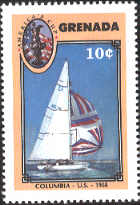 |
COLUMBIA,which the
owner, H.S VANDERBILT, has participated to 9 defences
from 1893 to 1967, beats SCEPTRE.
|
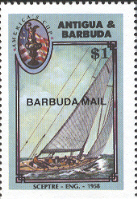 |
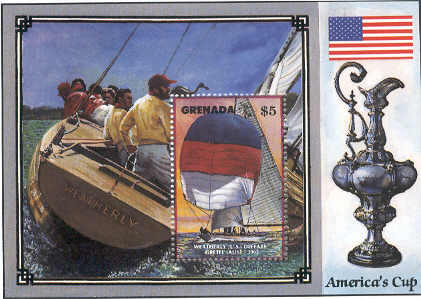 |
In 1962, the Australians appear in the match, but WEATHERLY is winner of GRETEL I. | 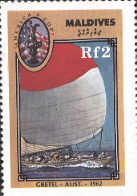 |
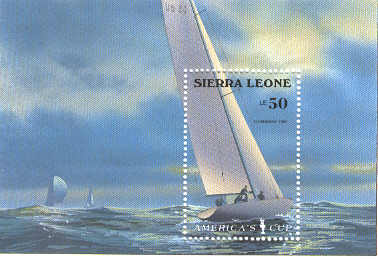 |
In 1964 CONSTELLATION beats SOVEREIGN, with Peter Scott, Robert Scott's son as skipper, of more than 20 minutes, the greatest gap since 1886. |
| 1967: face to the Australian DAME PATTIE, INTREPID honorates H.S. VANDERBUILT for his last participation. |
|
In 1970 INTREPID dominates the Australian GRETEL II, as the creator of BIC pencil, the baron BICH, comes to the competition. |
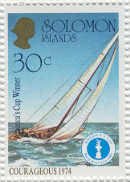 |
In 19 |
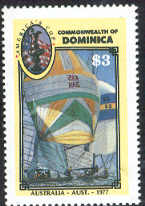 |
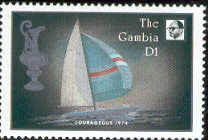 |
O.J. STEPHENS architect of FREEDOM -winner with Dennis Conner in 1980- has designed between 58 and 80 six 12M where two has realised a doubled, COURAGEOUS (74 and 77) and INTREPID (67 et 70). | 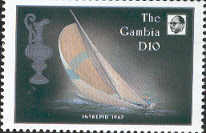 |
| In 1977, the baron BICH comes back in the race for the second time with FRANCE II. |
|
|
In 1980, Dennis Conner wins 37 defenders races on 40 and signs with FREEDOM his 1st victory face to AUSTRALIA. |
|
1983 is the historic year of AUSTRALIA II and John Bertrand face to LIBERTY of Dennis Conner: the Australians stop 132 years of US supremacy. |
||
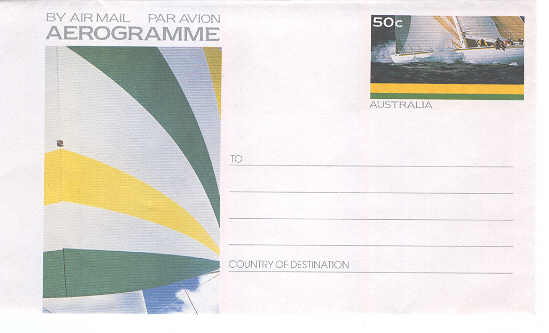 |
|
|
|
|
The cup
leaves the
United States thanks to a keel with revolutionary wings, protected
under tarpaulins. |
|
|
|
|
|
For the first time the cup LOUIS VUITTON has broken up the challengers .
In 1987 the cup occurs in Australia, at Perth but KOOKABURRA III cannot do anything face to STARS & STRIPES of Dennis CONNER who puts back the trophy not in New York but in San Diego.
 |
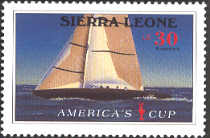 |
|
|
FRENCH KISS
of Marc PAJOT, successor of baron
BICH, goes to semifinal
of the LOUIS VUITTON cup after a match against CHALLENGE FRANCE
driven by his brother Yves PAJOT. |
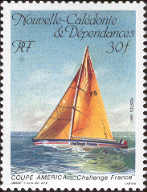 |
| In 1988, after many judicial disputes, the new Zealanders challenger on a giant 90 feet ship, NEW ZEALAND is defeated by STARS & STRIPES, a 60 feet catamaran driven by Dennis CONNER. |
|
|
|
In 1992, a new type of ship is defined in San Diego: the CLASS AMERICA longer than 12M but with only 16 crew on board. |
| AMERICA3 managed by the multimillionaire Bill KOCH allows to San Diego Yacht Club to conserve the cup. |
|
|
|
|
The ships use now the most sophisticated
technics: carbon and kevlar for the keel, sails in mylar and
kevlar, an extremely resistant composite, on-board electronic
equipment .
In 96, the new
Zealanders of
TEAM NEW ZEALAND take the cup into South Pacific by
winning 5 races against Denis Conner who, although
qualified with Stars and Stripes, used his rival ship,
YOUNG AMERICA.

Finally, the America's cup in 2000 opposes
TEAM NEW ZEALAND against the Italian
LUNA ROSSA: for the first time, the Americans do not
participate to the cup and the New Zealanders keep the cup.
|
|
|
| In 2003, a surprising cocktail gives the victory to the first European challenger to win the America's Cup: a ship manufactured in Switzerland, ALINGHI, for the Geneva yacht club, a new-Zealander skipper, Russell Coutts winner in 2000 with TEAM NEW ZEALAND and an international team with 7 nationalities. |
|
|
| ALINGHI's
characteristics: Length : 25 m, breadth: 4 m, weight : 25 tons, lest : 20 tons, sail : 350 sq. m. The keel is not in the mast axis but a little bit backwards and the flottation line at the bow is shortened to allow more sail. The orange stripes in the sails are part of a process which helps to determine their best shape. |
|
|
| After this victory, the rules are modified. Now "the 32nd America’s Cup calls for a series of regattas in each of the years leading up to the America’s Cup Match in 2007. These pre-regattas will unfold as Acts in a play, each building on the one before, the story advancing with each successive event, until the denouement of the Louis Vuitton Cup challenger selection series, and the America’s Cup Match itself." Thus Act 8 and 9 occur in Trapani, Sicilia, after Marseilles, Valence and Malmö. |
Update 18-10-2002
Alinghi update 8-11-2003
Tripani update 3-12-2005
|
Click below for the pages list |
|
|